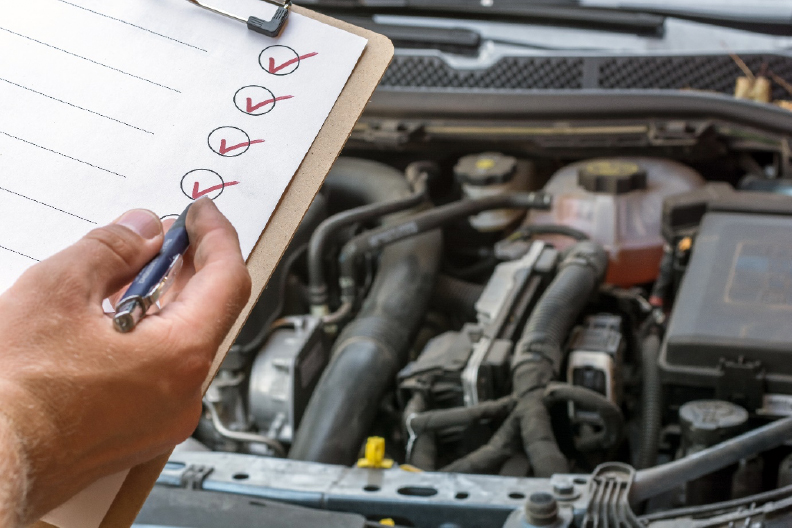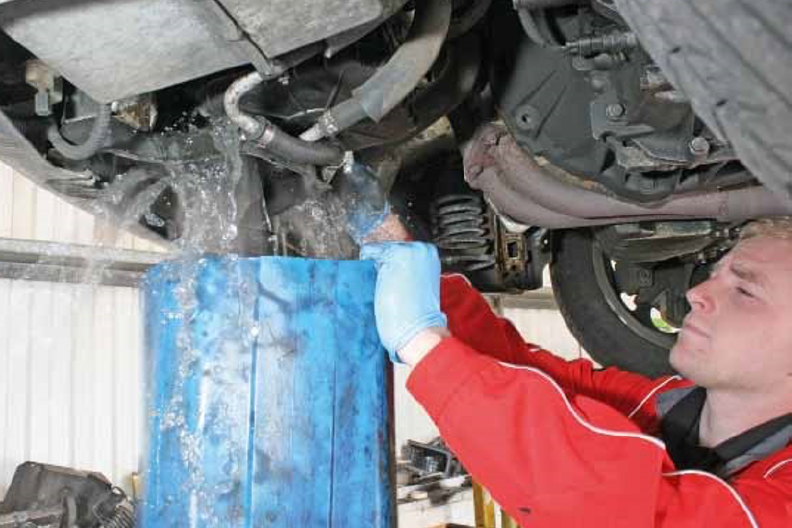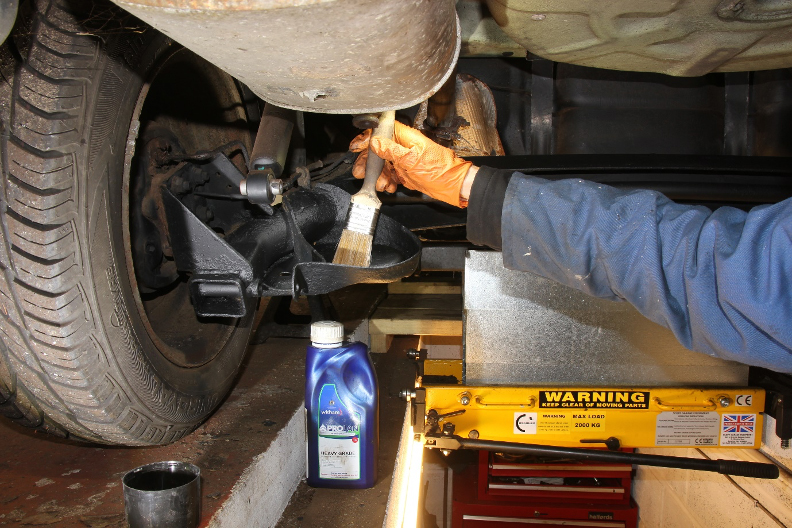Winterising classics: how to ensure a clean start in the spring

After a long season and summer of racing and general use, many cars, especially classic cars, are “winterised” or hibernated, which is one of the best means of protecting it from the perils of road salt, dirt and water.
By the end of the season classic and racing engine oils contain products of combustion such as acids, soot, wear metals and other contaminates. Leaving this dirty, used oil in the engine over the winter exposes the vehicle to potentially harmful corrosion which is worsened by condensation as the engine and fuel system ‘breathe’ in moisture during lay-up. So, before you say goodbye – whether it’s been on the racetrack or out for weekend drives, here is a useful checklist for storing your treasured classic.
Cleaning & covering
Washing, cleaning and polishing the bodywork may seem like a waste of time, but if you are putting a cover over the vehicle, this helps to reduce the risk of dirt becoming trapped and marking the paintwork. Even if a cover isn’t fitted, and the inevitable dust will gather on the paintwork, it’s much easier to wipe off if the exterior has been polished or waxed.
Engine
Consider changing the used engine oil to a fresh charge of a high-quality engine lubricant and run the engine briefly to ensure that all the components are coated with fresh oil. Classic 20W-50, Motul is one of very few classic engine oil suppliers to include a ‘tackiness’ additive to ensure that the metal surfaces are coated with a protective layer that prevents condensate from adhering to the metal surfaces by preferentially wetting them and so eliminating winter lay-up corrosion.
Full system
One aspect of vehicle storage that’s open to debate considers the petrol in the fuel tank. Should it be drained or left full? For instance, petrol generally depletes and goes off after three or four months, although we’ve not come across any problems with using it and mixing it with some fresh fuel is often the best approach. Deposits, which look like sand particles, are another problem from old petrol, which can block up the carburettor.
And petrol can extract moisture from the air (the ethanol in petrol is to blame for this), which can result in a layer of water in the bottom of the fuel tank. Draining the tank after winter storage to help remove any water may help, or even draining the tank before winter storage will help to avoid such problems.
Additionally, to protect the fuel system, store the vehicle with a full tank of quality fuel, treated with Fuel Stabilizer for winterisation. Filling the tank reduces the headspace above the fuel and minimises the amount of water that can be absorbed from the air. Products such as Motul’s Fuel Stabilizer keeps the fuel in good condition throughout the Winter months, ready for use in Spring.
Brakes & clutches
While some fluids benefit from being changed before storage, other fluids, such as brake and clutch fluids will deteriorate over the winter months, mainly by absorbing moisture from the air, as will any opened bottles of brake fluid. It is better to change these fluids in Spring, just before returning the vehicle to the road.
Battery
Trickle-charging the battery over winter, whether it remains with the vehicle, or is removed, is worthwhile instead of risking it going flat and having to fully charge it up again. If the levels inside the battery can be checked and topped up, do this as well. And if the battery is remaining with the vehicle, clean the terminals and apply petroleum jelly to protect them from corrosion, A reputable anti-seize grease like the award winning Prolan Range from Witham Group, can also be used for battery terminals as it protects them from water penetration.
Coolant

The engine coolant must contain an appropriate quantity of antifreeze to avoid the risk of it freezing over winter. If you are unsure, test it with an antifreeze hydrometer, which will help to measure its freezing point. Avoid mixing blue- and pink-coloured coolant, which can congeal and block waterways and even the water pump. Windscreen washer fluid should also contain a suitable screen wash to avoid reservoir deterioration.
Tyres
The one component that can deteriorate over winter is the tyres. Flat spots can appear if the vehicle doesn’t move, which may result in a knocking noise when driving the car. This will often disappear as the tyre’s shape returns when the car is driven, but there’s no guarantee, so it helps to move the vehicle periodically throughout storage. Tyre savers can also be used to help reduce the risk of flat spots. Under-inflated tyres put a greater strain on the sidewalls, so it’s wise to over-inflate the tyres by 10-15% at the start of winter storage.
General rust prevention

Winter storage can result in a number of components becoming seized through corrosion, such as the bonnet release, handbrake and even the clutch. Some are more difficult to avoid than others. Leaving the handbrake off with the wheels chocked and a low gear selected (manual gearbox) can help to preserve the handbrake. Applying a light grease, such as Qualube multi-ease lubricant to the bonnet release mechanism and any other similar mechanisms (e.g. the boot release) and even the door latches can help to reduce the risk of them becoming rusty over winter and difficult to operate.
Even spraying such a grease inside key holes helps to keep them lubricated as they can also freeze when the temperature drops below zero. Spraying a light grease over the handbrake mechanism, particularly if it’s located underneath the vehicle, will help to keep it free moving. Some braking systems have a semimechanical compensator fitted for the rear brakes, which is operated according to the load being carried. This is also worth lubricating to avoid seizure. Whilst a light grease may be suitable, a more long-lasting grease, such as Prolan anti-seize grease may be better. This is designed to keep mechanical components moving and has been proven to last for up to 30 years, which obviously saves time and money on multiple reapplication!
This bio-degradable product can lift rust scale, clean metal and free-up moving parts. Based on Lanolin it is non-toxic and can be used in and around electrical connections to prevent moisture penetration and corrosion, it also protects metal & rubber.
To shop any of these products, visit our website.



[…] Winterising your Mini with the Witham Group […]